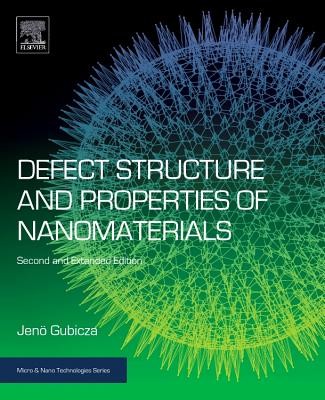
- We will send in 10–14 business days.
- Author: J Gubicza
- Publisher: Woodhead Publishing
- ISBN-10: 0081019173
- ISBN-13: 9780081019177
- Format: 19.1 x 23.9 x 2.3 cm, hardcover
- Language: English
- SAVE -10% with code: EXTRA
Reviews
Description
Defect Structure and Properties of Nanomaterials: Second and Extended Edition covers a wide range of nanomaterials including metals, alloys, ceramics, diamond, carbon nanotubes, and their composites. This new edition is fully revised and updated, covering important advances that have taken place in recent years.
Nanostructured materials exhibit unique mechanical and physical properties compared with their coarse-grained counterparts, therefore these materials are currently a major focus in materials science. The production methods of nanomaterials affect the lattice defect structure (vacancies, dislocations, disclinations, stacking faults, twins, and grain boundaries) that has a major influence on their mechanical and physical properties.
In this book, the production routes of nanomaterials are described in detail, and the relationships between the processing conditions and the resultant defect structure, as well as the defect-related properties (e.g. mechanical behavior, electrical resistance, diffusion, corrosion resistance, thermal stability, hydrogen storage capability, etc.) are reviewed.
In particular, new processing methods of nanomaterials are described in the chapter dealing with the manufacturing procedures of nanostructured materials. New chapters on (i) the experimental methods for the study of lattice defects, (ii) the defect structure in nanodisperse particles, and (iii) the influence of lattice defects on electrical, corrosion, and diffusion properties are included, to further enhance what has become a leading reference for engineering, physics, and materials science audiences.
EXTRA 10 % discount with code: EXTRA
The promotion ends in 20d.23:49:26
The discount code is valid when purchasing from 10 €. Discounts do not stack.
- Author: J Gubicza
- Publisher: Woodhead Publishing
- ISBN-10: 0081019173
- ISBN-13: 9780081019177
- Format: 19.1 x 23.9 x 2.3 cm, hardcover
- Language: English English
Defect Structure and Properties of Nanomaterials: Second and Extended Edition covers a wide range of nanomaterials including metals, alloys, ceramics, diamond, carbon nanotubes, and their composites. This new edition is fully revised and updated, covering important advances that have taken place in recent years.
Nanostructured materials exhibit unique mechanical and physical properties compared with their coarse-grained counterparts, therefore these materials are currently a major focus in materials science. The production methods of nanomaterials affect the lattice defect structure (vacancies, dislocations, disclinations, stacking faults, twins, and grain boundaries) that has a major influence on their mechanical and physical properties.
In this book, the production routes of nanomaterials are described in detail, and the relationships between the processing conditions and the resultant defect structure, as well as the defect-related properties (e.g. mechanical behavior, electrical resistance, diffusion, corrosion resistance, thermal stability, hydrogen storage capability, etc.) are reviewed.
In particular, new processing methods of nanomaterials are described in the chapter dealing with the manufacturing procedures of nanostructured materials. New chapters on (i) the experimental methods for the study of lattice defects, (ii) the defect structure in nanodisperse particles, and (iii) the influence of lattice defects on electrical, corrosion, and diffusion properties are included, to further enhance what has become a leading reference for engineering, physics, and materials science audiences.


Reviews